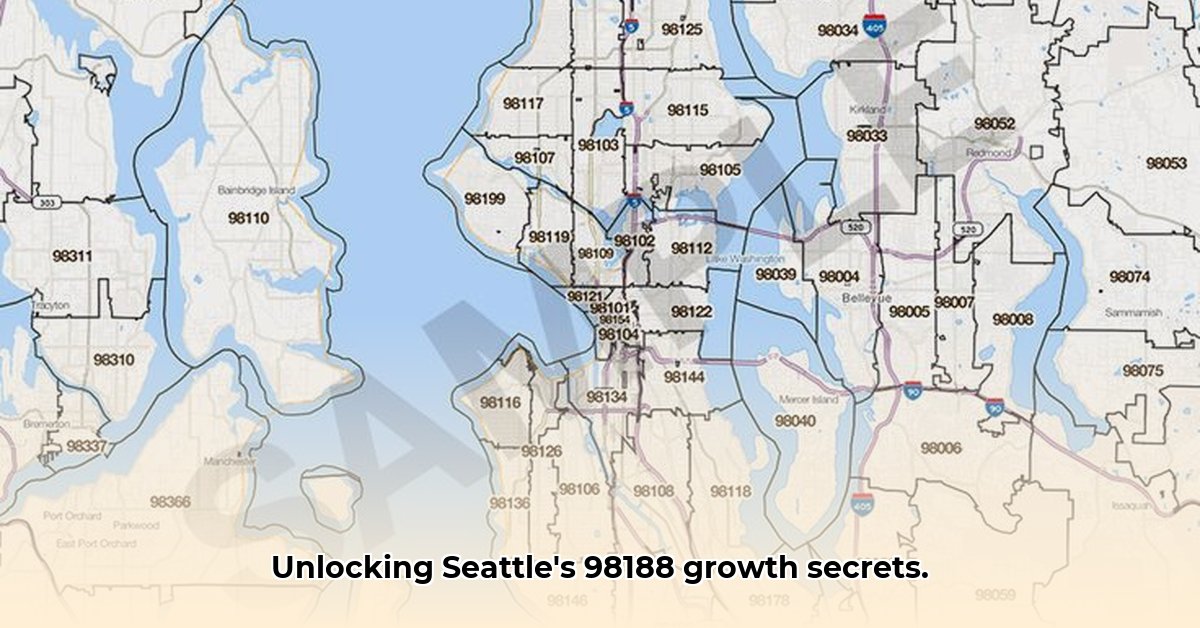
Understanding Seattle's 98188 Zip Code: A Demographic and Economic Overview
The 98188 zip code, located in Seattle, Washington, presents a complex picture of economic activity and demographic trends. Understanding its nuances requires a careful analysis of available data, acknowledging inherent limitations and inconsistencies. This report aims to provide a clear, data-driven overview of 98188, highlighting key insights for city planners, businesses, and residents.
Population Dynamics: A Challenging Data Landscape
Initial analysis reveals discrepancies in population figures. While the 2020 Census reported approximately 27,851 residents, other sources provide varying estimates. This discrepancy highlights a critical challenge: obtaining accurate and consistent population data in a rapidly evolving urban environment. Such inconsistencies hinder effective urban planning and resource allocation. Why the variance? Differences in data collection methodologies and the timing of surveys contribute to this uncertainty. Reconciling these disparities is crucial for informed decision-making. How can we ensure more reliable population counts for future planning? This question demands immediate attention from data collection agencies.
Economic Activity: A Thriving but Uneven Landscape
Despite population data uncertainties, the economic vitality of 98188 is undeniable. The area boasts approximately 1,511 businesses, generating over $2.5 billion in annual payroll and supporting 41,559 jobs. This economic strength is impressive, but a more detailed analysis of the types of businesses and their distribution is needed. Is the economic activity evenly distributed, or are there pockets of prosperity and economic hardship? Understanding this distribution is crucial for targeted economic development initiatives. What industries dominate 98188, and are there opportunities for diversification? These are key questions for future investment strategies.
Data Discrepancies: A Call for Improved Data Collection and Analysis
The inconsistencies between various population estimates raise concerns about data reliability and its impact on city planning and resource allocation. The discrepancies may stem from differences in methodologies, data collection timing, and the challenges of counting a mobile population within a dynamic urban setting. Without reliable population data, adequate resource planning across schools, healthcare, and public services becomes difficult and potentially inefficient. Improved methods for data collection and analysis must be prioritized, potentially including more frequent, updated surveys and the use of alternative data sources such as mobile phone data.
Actionable Insights for Stakeholders
The data available, while imperfect, provides valuable insights for various stakeholders:
City Planners: Precise population figures are essential for infrastructure planning, ensuring adequate capacity for roads, public transportation, parks, and other public services. Understanding the distribution of income and other demographic factors assists in tailoring projects to meet the specific needs of the community.
Businesses: Detailed demographic and economic data inform strategic business decisions, from market analysis to location selection and staffing. Understanding the local workforce and consumer base allows businesses to make well-informed decisions about investments and operations.
Residents: Access to comprehensive and reliable data empowers residents to participate actively in community development discussions and initiatives. Transparency and open access to data foster greater community engagement and a more informed citizenry.
Recommendations for Future Action
Addressing the challenges and maximizing the potential of 98188 requires a multi-pronged approach:
- Improved Data Collection: Implement strategies for more accurate and consistent population data collection, potentially involving multiple data sources and methodologies.
- Economic Diversification: Promote economic diversification to mitigate risks associated with reliance on a few dominant industries.
- Targeted Investment: Allocate resources strategically based on a thorough analysis of economic and demographic trends within the area.
- Community Engagement: Foster active community participation in decision-making processes related to development and resource allocation.
Conclusion: A Path Towards Sustainable Growth
The 98188 zip code presents a dynamic and multifaceted urban landscape. While challenges concerning data accuracy exist, the economic vitality and potential for future growth are apparent. By prioritizing improved data collection, fostering economic diversification, and ensuring community engagement, we can cultivate a thriving and resilient community within Seattle's 98188 zip code. Ongoing monitoring and analysis will be essential to navigate the complexities of urban development and ensure equitable growth for all residents.